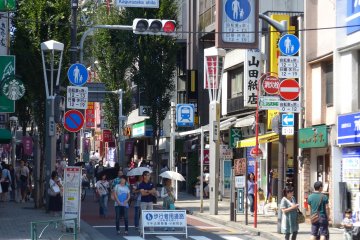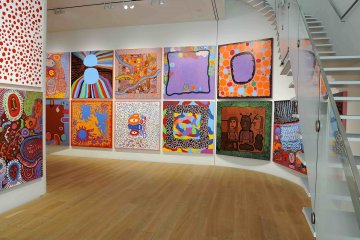What is Noh?
Noh is one of Japan’s oldest performing arts, a classical form of theatre that dates back to the 14th century. Recognised by UNESCO as an Intangible Cultural Heritage, it combines dance, music, and drama in a tightly stylised performance.

With stories often adapted from classical literature and historical legends, Noh has remained largely unchanged for centuries. Its slow, deliberate movements, masked actors, and minimal staging offer a striking contrast to more modern theatrical conventions.
Noh plays are traditionally divided into five categories, each with distinct themes and styles:
- God Plays (shobanme mono): Stories featuring deities who bring blessings like peace and good harvests.
- Warrior Plays (shura mono): Tales of samurai spirits trapped by their past and seeking redemption.
- Woman Plays (kazura mono): Dramas centred on female characters, often caught between love and sorrow.
- Madness Plays (kyōjo mono): Portrayals of characters driven to madness by tragic circumstances.
- Demon Plays (kiri noh): Short, fast-paced pieces featuring supernatural beings.
Where to See Noh
A leading venue for Noh performances in Tokyo is the Yarai Noh Theater, located in the historic Kagurazaka neighbourhood of Shinjuku. Originally built in 1935 and reconstructed after World War II, it is now the city’s second oldest Noh theatre.
The theatre retains key elements of traditional stage design, including a cypress-wood platform and the iconic bridgeway (hashigakari) used for entrances and exits. With just over 200 seats, it offers an intimate setting where subtle gestures and expressions can be closely observed by the audience.

Types of Performances
Yarai Noh hosts a variety of events throughout the year. Regular performances, usually held on the second Sunday of each month, include both Noh and Kyōgen—short comedic pieces that historically served as light interludes between more solemn Noh dramas.

In addition to its core offerings, the theatre also hosts special events throughout the year, including season festivals, anniversary recitals, and showcases of rare plays.
Occasionally, English-language sessions are offered to provide an accessible introduction to Noh. These may include guided stage tours, lectures, dance demonstrations, and opportunities to try on traditional masks and costumes.

Language and Accessibility
While most performances are delivered entirely in classical Japanese, language support for non-Japanese speakers is gradually improving.
At special events, English subtitles may be available via rental tablets. For regular performances, an English-language booklet—with summaries of the play and information on the instruments, stage, and history of Noh—is often available on request.
Even without these aids, the music, movement, and visual staging make for an accessible and worthwhile experience.
Ticket Options
Tickets can be purchased via Yarai Noh’s official website, which links to external ticketing platforms. Payment is usually possible by credit card or at convenience stores. Phone reservations may also be available for certain events.
Prices generally range from ¥3,000 to ¥6,000, depending on seat location and type of programme. Students under 26 may qualify for half-price tickets.
Many performances are divided into two parts, with tickets sold separately for each. Purchasing tickets for both parts often qualifies for a discount.










